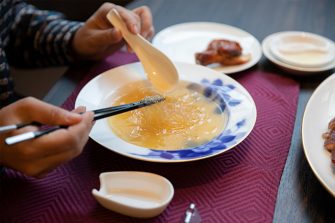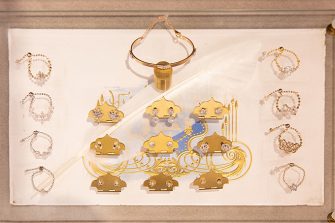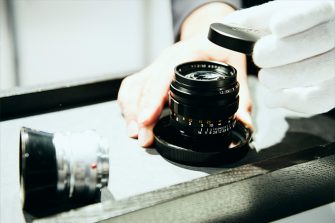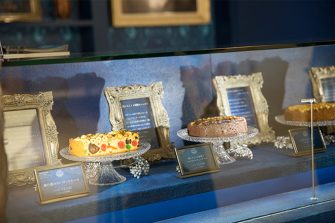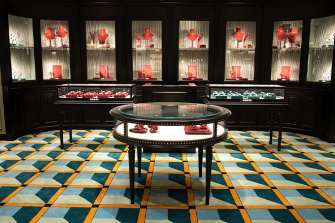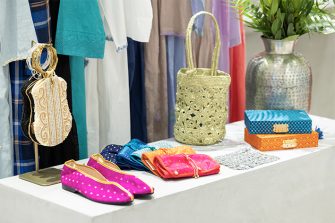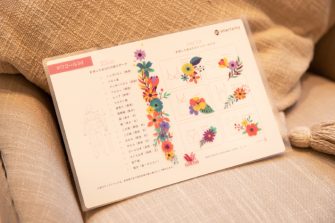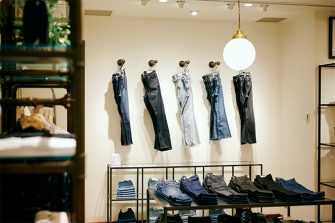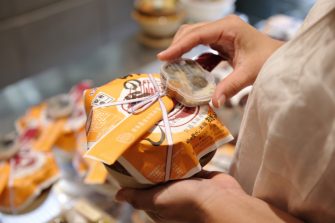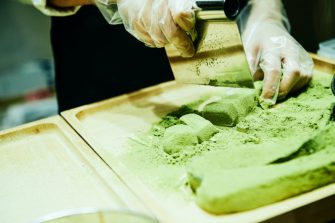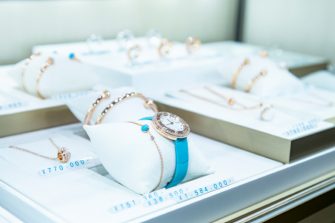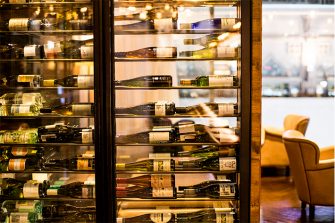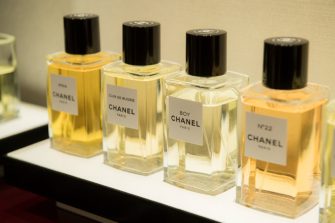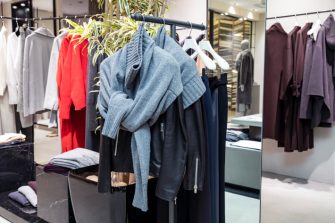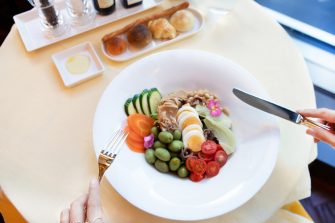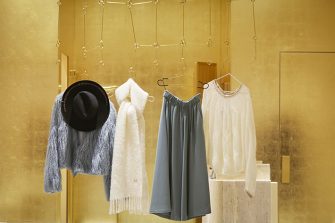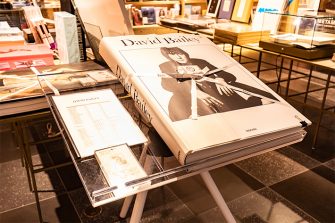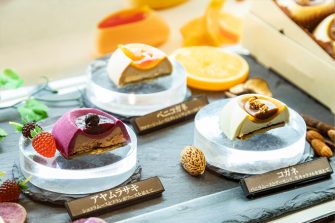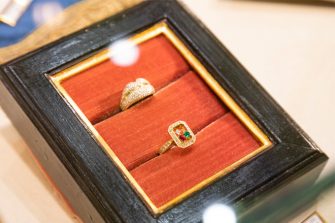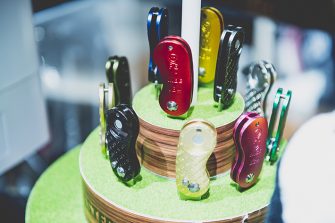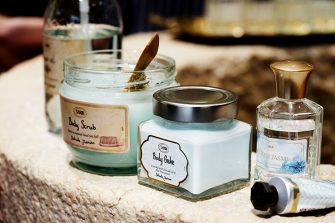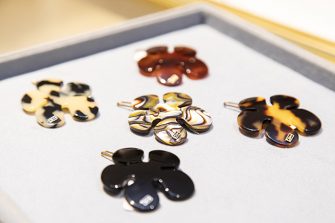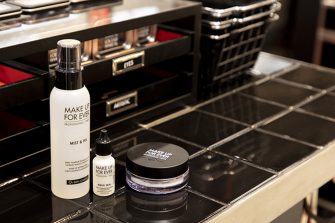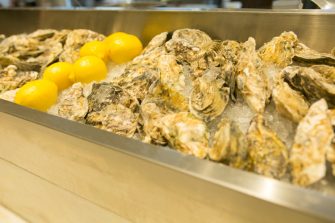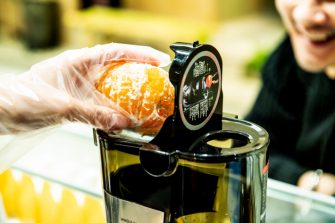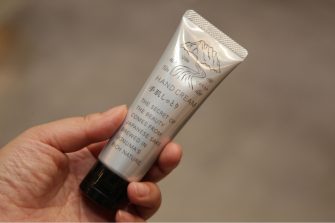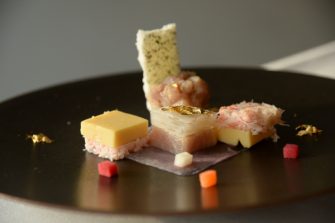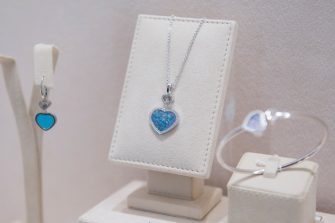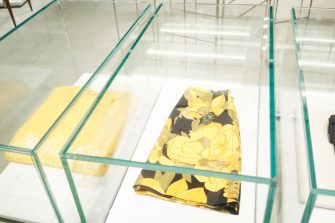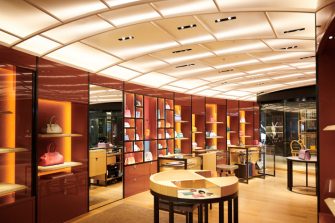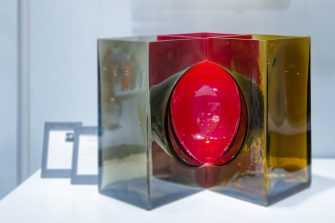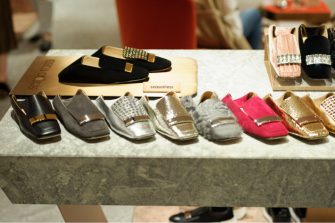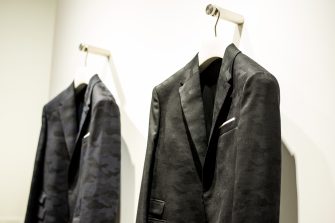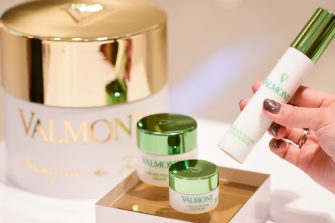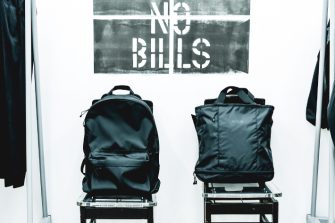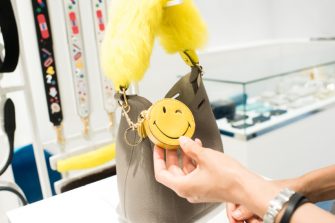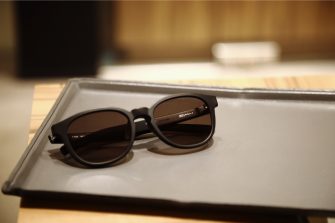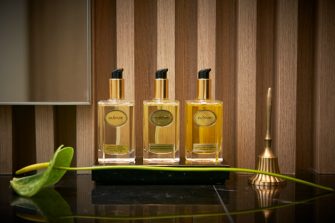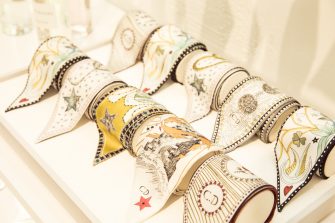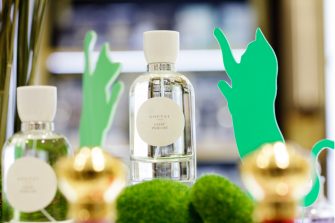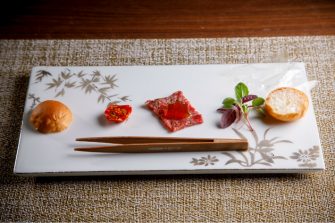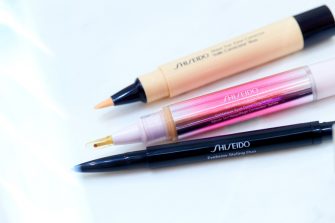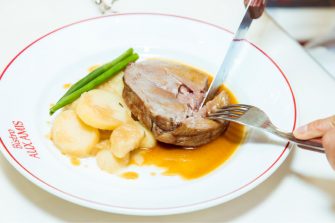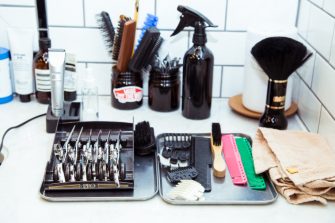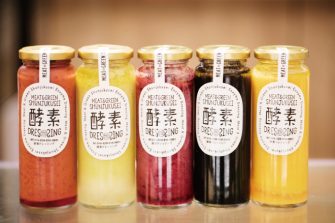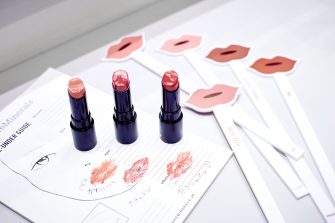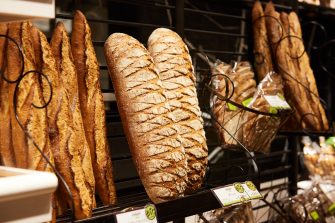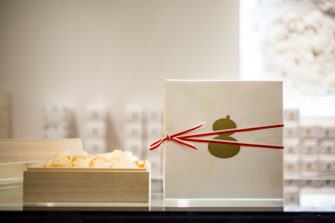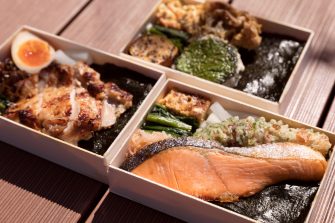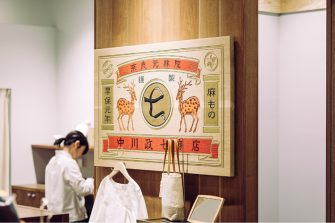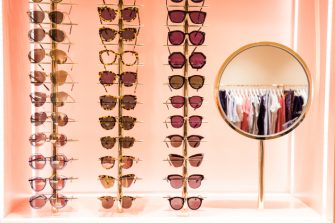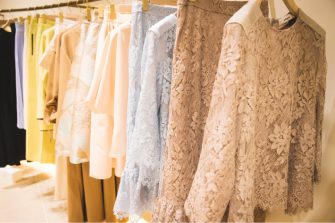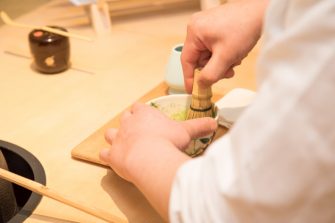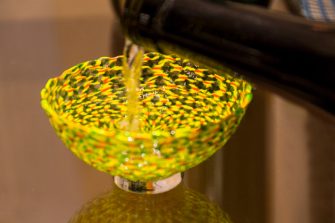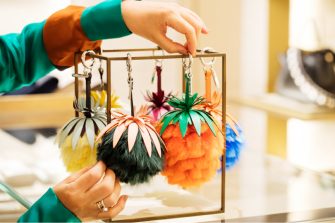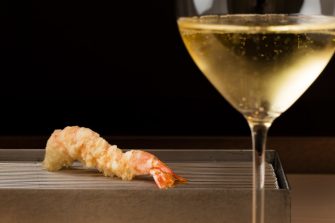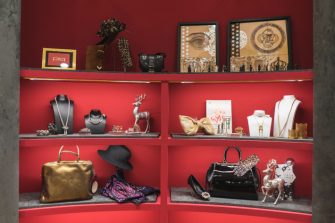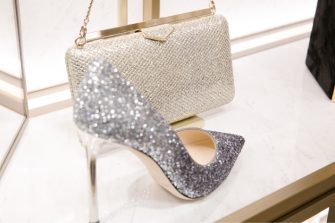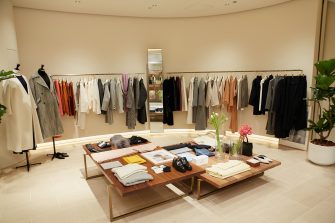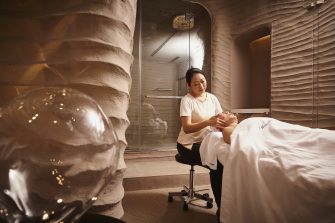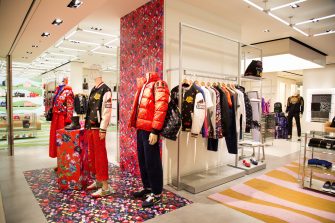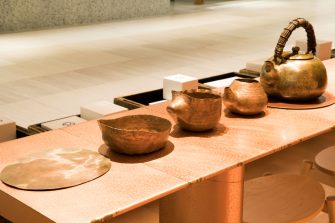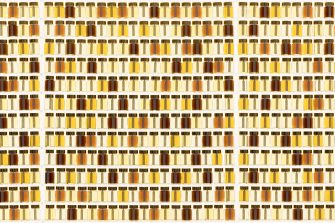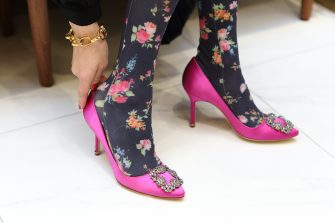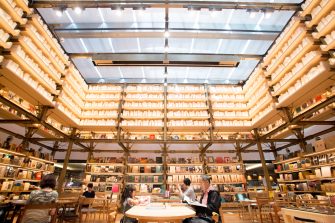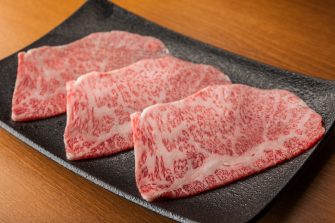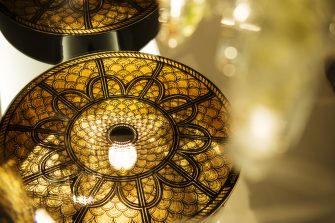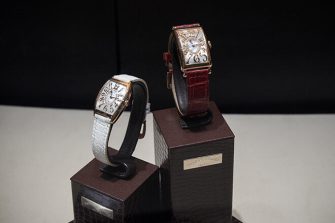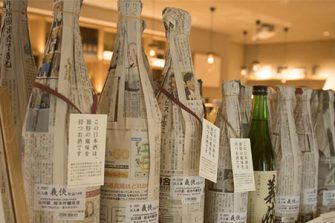

GINZA SIX EDITORS
ファッション、ジュエリー&ウォッチ、ライフスタイル、ビューティ、フード…
各ジャンルに精通する個性豊かなエディターたちが、GINZA SIXをぶらぶらと
歩いて見つけた楽しみ方を綴ります。
デュアルワーカーの好奇心と実用に応える、銀座のなごみ散歩 A Calming Ginza Walk Piques Curiosity and Meets Practical Needs for Those with Multiple Professions
谷 宏美
GINZA SIX EDITORS Vol.59
取材や発表会、試飲会などで頻繁に訪れる銀座は、プライベートでも通うことの多い街。もう長年の習慣になっている毎月の観劇や、人と待ち合わせての食事など、ちょっとしたハレ気分で出かけることも多々。GINZA SIXのオープン以来、そんな銀座詣でがよりバラエティの富んだものになった。ここにしかないバリューをベースに企画のリサーチやロケハンもでき、ルーティンに必要なものもゲットできてしまうのだ。私はきもの着用率も高いのだが、それを受け止めてくれるのも銀座の空気感ならでは。この“ぶら歩き”はワインと美容を生業とし、ライター&ソムリエールの二足のわらじを履く私の、趣味と実用のニーズを心ゆくまで満たしてくれる。

歌舞伎のときはやっぱり紬。午前の部を観たあとに和な気分でスタートする“ぶら歩き”、まずは6階の「銀座 蔦屋書店」からスタート。アートやデザインにフォーカスしたセレクトが充実していることは周知の通り、そして江戸好き、花魁好き、利休にまつわる書物はいくら読んでも飽きない自分にとって、日本文化コーナーの「櫓」は、心踊る場所だ。
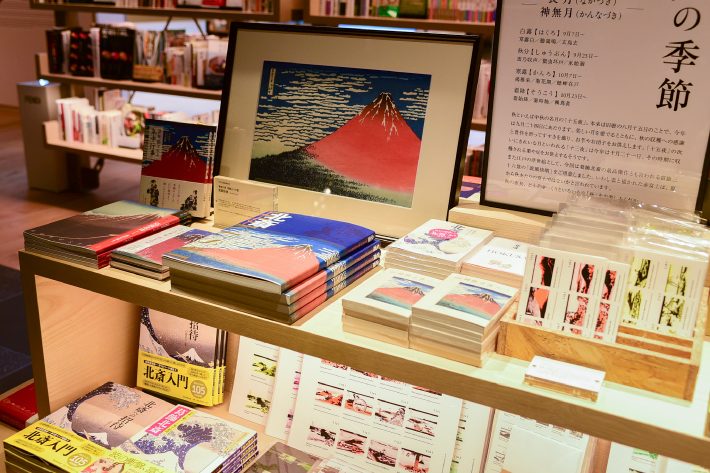
特設コーナーでは、近年世界規模でブームの北斎にフィーチャーし、富嶽三十六景の「凱風快晴」通称赤富士とともに数多の北斎本やグッズが並べてある。自分が働くワインバーで、北斎のアートトークを開催したばかりにつき、吸い寄せられるように北斎本を手に取る。木版画専門の版元芸艸堂『北斎-世界を魅了する浮世絵師と弟子たち-』や『もっと知りたい葛飾北斎』(東京美術)など図版たっぷりの名版がちゃんとあるのがさすがだ。
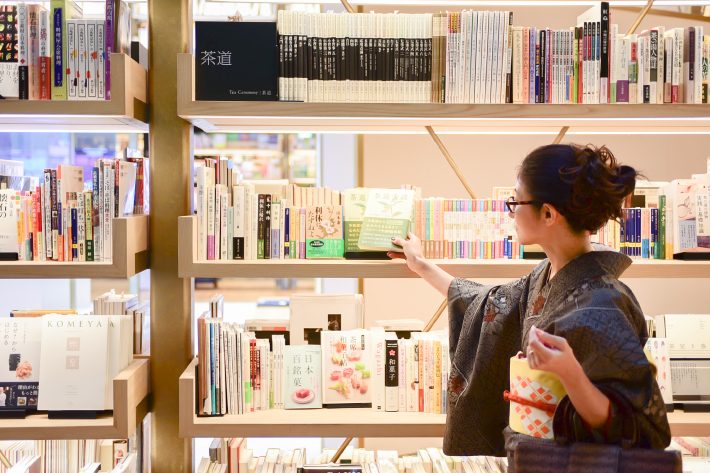
その後ろは茶道書のコーナー。ハウツー本はもちろん、建築や美術、料理、織物など総合芸術であるだけに実に多様な本がある。たぶんどこでどんな仕事をしていても茶道だけは続けていくであろうライフワーク。利休研究本や利休と周辺の人々を描いた小説はあると買ってしまう。なかなか新刊が出るジャンルではないが、熊田葦城著『茶道美談』(宮帯出版社)が目に止まる。利休と戦国時代の武将や数寄者たちの茶にまつわるエピソードを、古文書や書簡などから抜粋した逸話集だ。復刻されたものらしく装丁も美しいのでこれは読んでみよう。
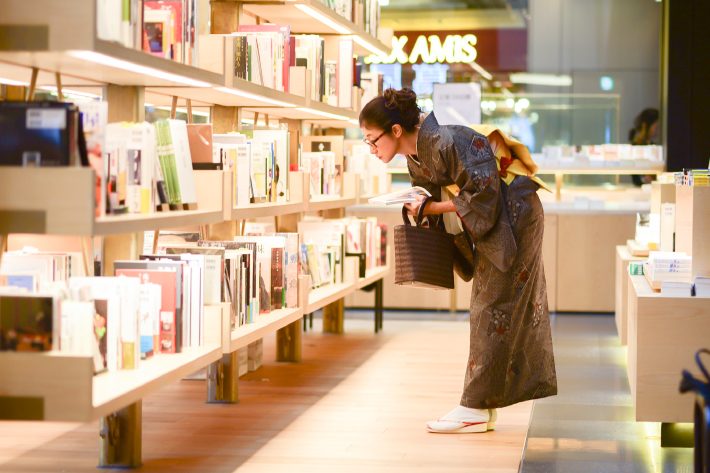
廓の文化にも並々ならぬ興味があり、松井今朝子や隆慶一郎の文学にみる美しく哀しい世界を旅するのが好き。生まれ変わったら花魁として生きてみたいと妄想するほど(笑)。遊女から最上ランクの太夫に関する書物がこんなにあるのは、総合書店ではここだけだろう。『全国遊郭ガイド』なんてものもあり浮き足立つ。その隣は春画コーナー。浮世絵とともに注目を集めているが、棚から引っ張り出すには多少の勇気が必要だ。
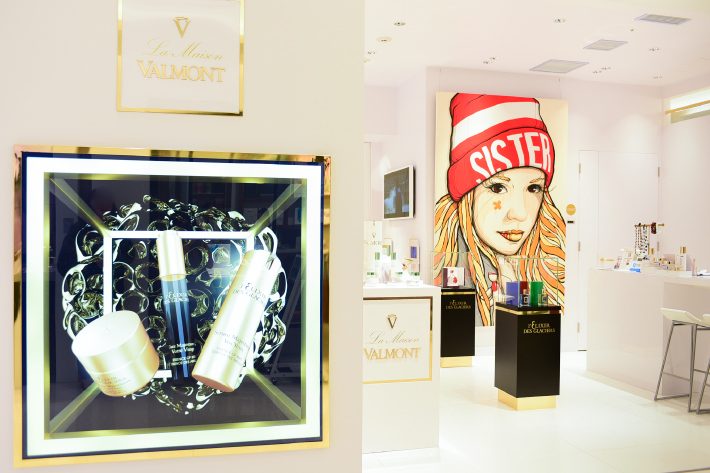
次にぶらぶらと向かったのは地下のコスメフロア。二足のわらじゆえ、編集部員のときよりもフリーの今の方が忙しい。そんなわけでスキンケアに求めるのも、劣化しつつある肌を即効で底上げしてくれること。スイス発の実力派スキンケア「ヴァルモン」は、以前パリのパラスホテル「ル・ムーリス」のスパを取材しその優れた効果を知ってファンになったブランドだ。現代アーティストのサポートも行っていて、「ラ・メゾン・ヴァルモン」にも、ベルリンのストリートアーティスト、エル・ボチョの作品「Sister」が飾られている。

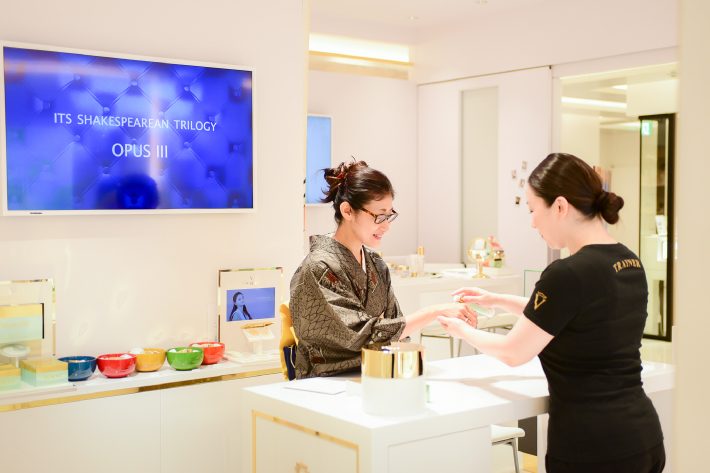
この秋にリニューアルしたAWF5シリーズは、弾力や透明感、ふっくら感など5つのファクターにターゲットを絞り、そこに効き目のある成分を独自配合。さらにそれぞれが互いに相乗効果を発揮して効果を高めるという画期的なライン。弾力の衰えが深刻ゆえ、引き締め効果のある「Vシェイプ」ライン(Vシェイプ コンセントレート¥32,000・30ml、同クリーム¥35,000・50ml、同アイバーム ¥25,000・15ml ※以下全て税抜価格 )を紹介してもらう。濃密なクリームにサラリとしたテクスチャーの美容液、そしてユニークなのがアイバーム。ジェル状のこってりしたテクスチャーで、指先でピタピタと目元につけるとビシッと止まりそのまま留まる。瞬時に目尻がピンと上がっているのを実感、これはいい、ほうれい線にもピタピタ。アゲアゲ。
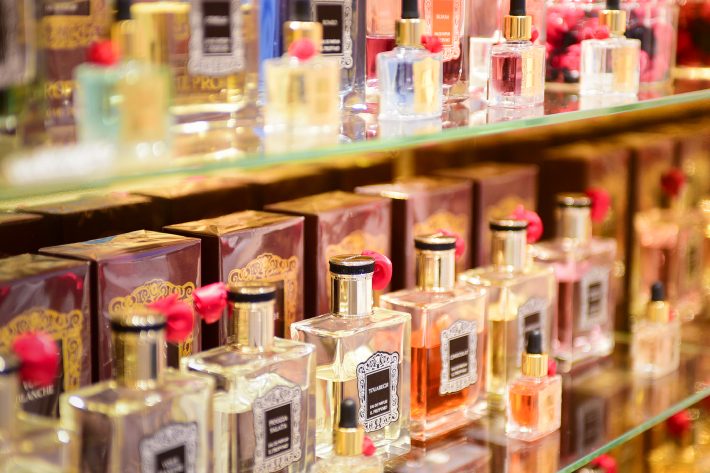
ラ・メゾン・ヴァルモンでは、イタリアのインディペンデント系フレグランス「イル プロフーモ」を試せるのも特筆。イタリアの伝統芸術がインスピレーションというだけあり、クラシカルで美しいボトルに目を奪われる。けれどボローニャ生まれのシルヴァナ・カソーリが手がける香りは極めてモダンでナチュラル。繊細なローズも好きだし、シェイクスピアの作品がイメージソースの「ライサンダー」や「ロメオ」などはデイリーで使える香り。グルマン系の「ショコラ」や「ジンジャー」ならワインシーンにもいけそう。
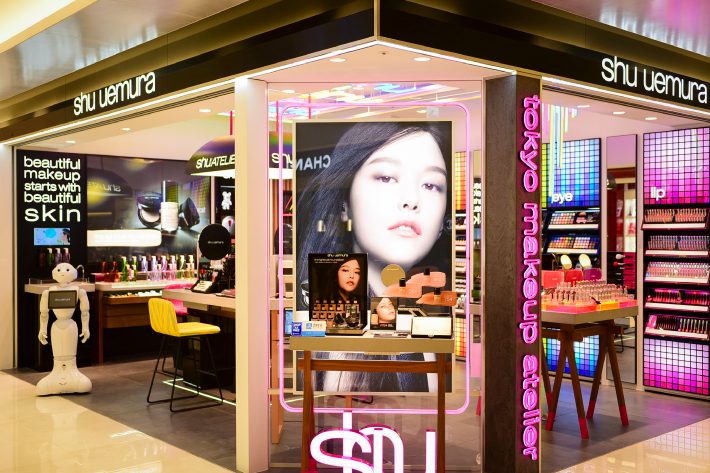
ちなみにエディターは黒子だから自分のルックスは適当でも許される(?)けれど、店に立ってお客さまにサービスもしている今、あまりに無頓着なのはご法度。曲がりなりにもきちんと見えることが求められる…。すがる思いで「シュウ ウエムラ」へ。ベースとメイクでなんとかしよう。
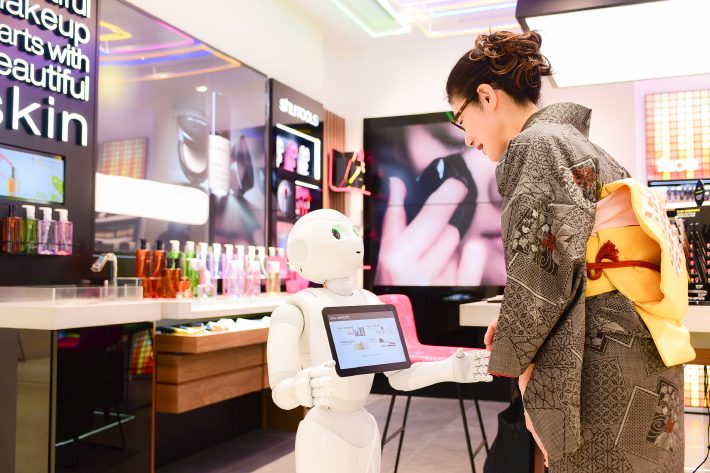
店頭ではペッパーくんが「何をお探しですか?」と迎えてくれ、私に必要なアイテムを指南してくれた。ペッパーくんが丁寧に答えてくれるものだから結構真剣に相談する私…。
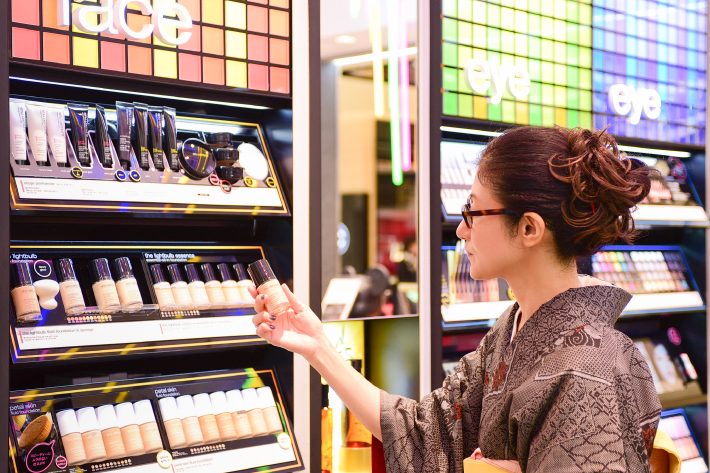
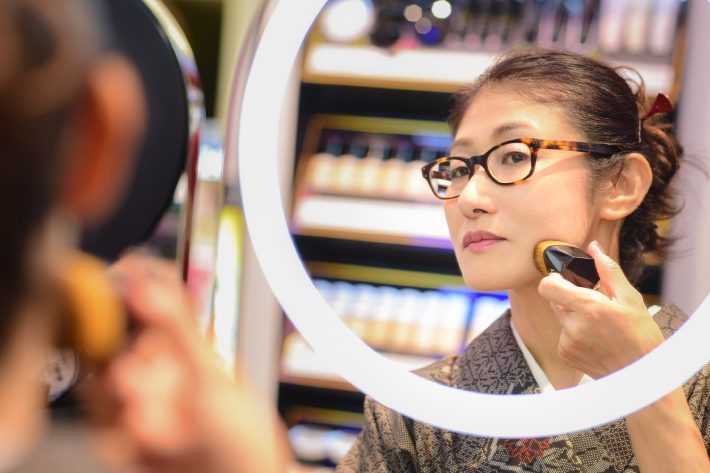
進化する名品ファンデーション“ザ・ライトバルブ”シリーズ。ひょうたんのようなフォルムのスポンジでトントンつけることで手早く自然なツヤ肌をつくる、アーティストブランドならではの秀逸なベースメイク。今年パワーアップしたザ・ライトバルブ フルイド(全13色30ml / SPF25 PA+++ 各¥5,200)は、今っぽいグロウなツヤ肌を叶えつつ、アラをしっかりとカバーしてくれる。肌色でなく明るさでカラーを選ぶので白浮きとも無縁で、大人のきちんと肌を実現してくれるのがありがたい。ひょうたんスポンジならきれいなツヤが、そしてなんと18万9000本の毛を使った高密度ブラシでサラリとつければ端正な印象になり、和装にもばっちり。ちなみにこのブラシのフォルム、シュウ ウエムラのアーティストがこの銀座で目にしたディスプレイウィンドウから生まれたものだとか。

10月1日デビューの新リップ「マット シュプリア」(全15色 各¥3,200)もチェック。マットなテクスチャーと鮮やか発色を実現し、濃密なカラーがメイク感をアップ。この質感とシックな色合いはきものメイクにもぴったりだ。カラーバリエにブラックが入っているのもアーティスティック。
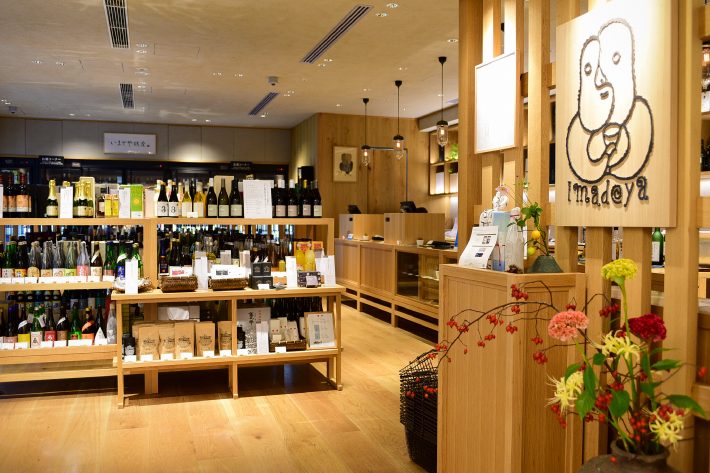
さらに必ず立ち寄る「いまでや銀座」は、日本酒の品揃えもさることながら日本ワインのラインナップが驚くほど充実していて、その稀少なラインナップは他店の追随を許さない。強い意志とこだわりをもつ日本の小規模生産者は流通ルートにのせることをよしとしなかったり、生産量が少なく流通も限られるため、実際にワイナリーに行かなければ購入できないものも少なくない。けれどこちらでは現地でも品切れのものが入手できたり、ひとり1本しか買えないカルトワイナリーのアイテムを置いていたりするため、「ひゃーこんなレアものが!」と毎回驚いて声をあげていると思う。お相手いただいた店長の大川翔平さんいわく、100アイテムくらいの日本ワインを扱っているとのこと。日本のワイナリー軒数が現在約330だから、驚くべき数である。

この日は、先ごろ取材で訪れた長野県東御市のワインを発見して声をあげた。ヴィラデスト ガーデン アンド ファーム ワイナリーやリュードヴァンといった東御の有名ワイナリーの並びに「ぼんじゅーる農園」と「シクロヴィンヤード」があったのだ。いずれも首都圏から東御に移り住んでぶどう栽培を始めた家族経営の小さな農家。シクロヴィンヤードは今年ワイナリー建設に着工し、来年のヴィンテージから自社醸造が可能になるが、今は双方、近隣のワイナリーにぶどうを持ち込む委託醸造という形でワインを造っている。もちろん生産本数はごくわずか。ワイン造りに対する熱い思いをインタビューして来たばかりなので、その思いが込められたワインに、銀座で再び出合えたことに感激する。
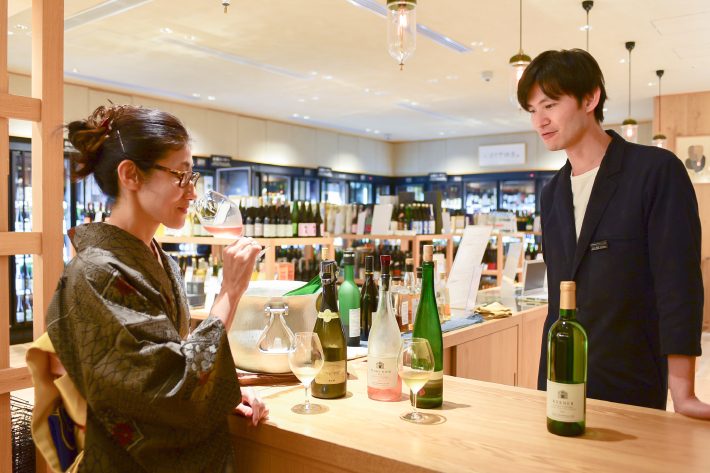
ぶら歩きにふさわしいのは角打ち。いまでや銀座では日替わりで4〜5種のワインや日本酒をテイスティングすることができる。この日はココファームがリースリングリオンで造る瓶内二次発酵のスパークリング「のぼブリュット 2014」(¥1,000)、透明感あふれるなんともチャーミングな「北ワイン ピノ・ノワールロゼ 2017 」(¥700)、冷涼な土地でしっかりと完熟を待ったことがわかるトロリとしたテクスチャーがたまらない「藤澤農園 余市ケルナー2015」(¥700)をトリプルで試飲。いずれも状態よし。レアな日本ワインをバイザグラスで飲めるのは至福の喜びだ。
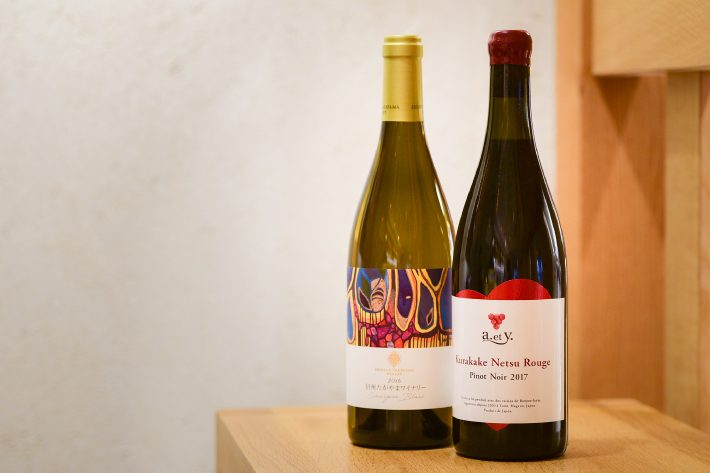
締めに、取材してそのピュアな味わいに惹かれた「ぼんじゅーる農園 クラカケ ネツ ピノ・ノワール 2017 」(¥3,340)と、「信州たかやまワイナリー ソーヴィニヨン・ブラン 2016」(¥2,850)をお買い上げ。これも注目度の高いアップカミングなアイテムでバイヤーさんのいち推しだそう。さらに! 探していた某ワイナリーの超人気アイテムをゲット(泣)! 日本ワインのワンダーランドさながら、ここに来たら本当に何でも見つかる。
デュアルワーカーの好奇心をそそり、必要なものを示唆してくれるGINZA SIXでの“ぶら歩き”。今日も来てよかった、と帰途への足どりも軽い。
Text:Hiromi Tani Photos:Midori Yamashita Edit:Yuka Okada
I often go to Ginza for job-related research, announcements, tastings, and other events. I visit quite often on my own time, too. For years, I’ve gone monthly to the theater in Ginza. Sometimes I’ll meet people here for lunch or dinner. I visit quite often for various special occasions. Since GINZA SIX opened, these pilgrimages to Ginza have become even more varied. Based on the value I can find only here, I do research for articles, scout locations, and pick up things I routinely need. I often wear a kimono, garb for which the atmosphere here is especially welcoming. As someone who makes her living in the two spheres of wine and beauty—as a writer and sommelière—I find GINZA SIX meets both personal and professional needs.

For kabuki theater-going, I wear a tsumugi fabric kimono. A traditional Japanese mood maintains its grip as I start my wandering through GINZA SIX, after I take in a morning performance. First, I head to Ginza Tsutaya Books on the sixth floor. As you may know, the arts and design book section is extensive. Since I’m someone who is enthralled by aspects of the Edo culture, such as oiran courtesans, someone who never tires of reading books on the tea master Rikyu, I’m always quietly thrilled with the Yagura Japanese culture section.

There’s a special display right now featuring Hokusai, whose popularity in recent years has been global. It features the artist’s “Fine Wind, Clear Morning” print, commonly known as “Red Fuji,” from Hokusai’s Thirty-Six Views of Mount Fuji, along with a profusion of Hokusai books and products. The wine bar where I work recently hosted a talk on Hokusai, so I’m drawn to this particular display and pick up a Hokusai book. Some, of course, are filled with color plates: examples include famous pieces such as “Hokusai: The Ukiyo-e Master and His Disciples Who Captivated the World,” published by Unsodo, a specialist in woodblock printing, and “Learn More About: Katsushika Hokusai” published by Tokyo Bijutsu. That’s why I love this place.

Behind the Hokusai display are the tea ceremony books. There are how-to books, of course, but also a wide range of other books reflecting how the tea ceremony as an art form touches on architecture, art, food, textiles, and other arts. The tea ceremony is my life’s work, something I’ll continue doing wherever I happen to be or whatever else I’m doing. If I come across a study of Rikyu or novels depicting Rikyu and his circle, I cannot resist buying it. In a genre not necessarily known for an outpouring of new publications, Ijo Kumada’s “Tea Ceremony Tales” (Miyaobi Publishing) catches my eye. The volume collects anecdotes from ancient writings, letters, and other documents related to the tea ceremony and involving Rikyu, Warring States military commanders, and tea masters. The book is a lovely reissue, beautifully bound, and I resolve to read it.

I’m also interested in historical courtesan culture and love visiting the sad, beautiful worlds depicted in literary works by authors like Kesako Matsui and Keiichiro Ryu—to the point that I fantasize about being reborn as a courtesan. From harlots to high-ranking courtesans, only a major bookstore like this could stock so many titles on this particular aspect of history and culture. There’s also the “Nationwide Guide to Red Light Districts,” a volume that makes me restless. Right next to this is the erotica section, which now draws public attention like ukiyo-e, even if it takes some courage to pull a book down from the shelf.

I eventually find myself making my way to the belowground cosmetics floor. Since I work two jobs, I’m busier now as a freelancer than when I was as an in-house editor. What I want out of skincare these days is an instant, effective boost for my aging skin. Valmont is a Swiss brand of powerful skincare products. I became a fan while doing research on the spa at Le Meurice, a palace hotel in Paris, and learned about the remarkable efficacy of this brand. The brand also happens to support the arts and contemporary artists. La Maison VALMONT here displays a work, “Sister,” by the Berlin street artist El Bocho.


Updated this fall, the AWF5 series focuses on five factors, including elasticity, transparency, and fullness, and offers products composed of unique blends of efficacious ingredients. The innovation of this line lies in generating and harnessing the synergies among the various ingredients. My skin’s elasticity is apparently decreasing, so I’m shown the tightening V-Shape line (V-Shape Concentrate 32,000 yen, 30 ml; V-Shape Cream 35,000 yen, 50 ml; V-Shape Eye Balm 25,000 yen, 15 ml; all prices listed before tax). The Concentrate is a rich cream, but the texture is smooth and not sticky. The unique Eye Balm features a thick gel-like texture. When you dab it with a finger around the eyes, it stops and stays there. I feel the corners of my eyes instantly lift; it also tightens my laugh lines. All in all, it leaves me in higher spirits.

La Maison VALMONT, it should be noted, also lets you try IL PROFVMO, an independent Italian fragrance. Inspired by traditional Italian art, the beautiful bottle with its classic design is itself eye-catching. The fragrance, created by Bologna-born Silvana Casoli, is, by contrast, modern and nature-inspired as well. I love the delicate rose, too. Lysander and Romeo, inspired by Shakespeare’s plays, are fragrances for daily use. The gourmand series with Chocolat and Ginger would no doubt work for the wine scene.

Since editors generally work behind the scenes, I’ve tended to think a casual presentation is tolerable—or so one would hope!—but I also currently serve customers at a wine bar. Here, an indifference to one’s appearance is considered deplorable. Even if one falls short of perfection, an effort to look good is the norm. Hoping against hope, then, I head to Shu Uemura with the idea of getting some base and makeup.

Pepper, the robot, greets me at the entrance and asks: “Can I help you find something?”—then proceeds to tell me what I need. Pepper’s courtesy and attention are such that surprisingly, I find myself in earnest consultation.


The brand’s bestselling The Lightbulb foundation series continues to evolve. Apply a smooth layer with the gourd-shaped sponge to create naturally glistening skin—first-rate base makeup from an artist’s brand. Given a power boost this year, The Lightbulb Fluid (13 colors; 30 ml; SPF 25 PA+++; 5,200 yen each) brings out an in-fashion glow in your skin while effectively disguising blemishes. You can choose colors not just by hue, but by brightness. To my great satisfaction, this line neatly produces an adult-looking skin without giving too much whiteness. Applied with the gourd sponge, it produces a lovely gleam and glow; applying a smooth layer of foundation with the high-density brush (featuring 189,000 bristles) creates a look of austere refinement that goes perfectly with a kimono. Incidentally, the form of the brush was inspired by a display window seen in Ginza by a Shu Uemura artist.

I also check out a new lipstick, Matte Supreme (available in 15 colors; 3,200 yen each) and released October 1. The line features a matte texture and vivid colors, which somehow enhance the physical sensation of wearing lipstick. The texture and chic colors go perfectly with kimono makeup. The color variations include black—which, I may add, makes quite the artistic statement.

I drop by Imadeya Ginza, as I always do on my visits here. Imadeya Ginza offers an extensive lineup—astonishingly so—of Japanese wines, in addition to an assortment of sake. Its rare lineup is not found anywhere else. Strong-willed and particular, Japan’s small-batch producers can be reluctant to stoop to conventional sales channels. The volumes are small; availability is limited; and more than a few wines can’t be purchased without visiting the actual winery. But at Imadeya Ginza, you may come across products sold out locally or even wines from trendy wineries with purchases limited to one bottle per customer. Each time I visit, I find myself blurting out, “Wow! They have this one, too!” Store manager Shohei Okawa, who once again helps me today, says they stock around 100 Japanese wines. That’s astonishing, since all of Japan features about 330 wineries at this time.

Today, I blurt out my amazement on discovering wine from Tomi City, Nagano Prefecture, which I’d recently visited to do research for an article. Villa d’Est Gardenfarm and Winery and Rue de Vin are among the city’s best-known wineries, but I also came across Bonjourfarm and Cyclo Vineyards, small family vineyards both started by people who moved to Tomi from the Tokyo area and began cultivating grapes. Cyclo Vineyards began building a new winery this year and will begin fermenting in-house from next year’s vintage. Currently, both outsource fermentation to a neighboring winery. Production volumes, of course, are infinitesimal. I’ve just interviewed these two wineries about their passion for winemaking, so I’m thrilled to encounter the products of their devotion in Ginza.

When you’re simply wandering about, you can’t go wrong visiting a liquor store with an in-house bar. At Imadeya Ginza, you can sample four or five varieties of wine and sake, a selection that changes daily. Today, I try three: Novo Brut 2014 (1,000 yen), a sparkling wine produced with Riesling Lion grapes by in-the-bottle secondary fermentation at COCO Farm and Winery; Kita Wine Pinot Noir Rose 2017 (700 yen), a charming wine with uncluttered sensation on the palate; and Fujisawa Farm Yoichi Kerner 2015 (700 yen), which features an irresistible rich texture, from which one surmises the wine makers worked in a cold climate and patiently waited for the grapes to ripen fully. All were great. Drinking rare Japanese wines by the glass is a singular joy.

To top it all off, I purchase a bottle of Bonjourfarm Kurakake Netsu Rouge Pinot Noir 2017 (3,340 yen), whose pure flavor fascinated me while I was doing research on the winery, as well as a Shinshu Takayama Winery Sauvignon Blanc 2016 (2,850 yen). The latter bottle is recommended by the buyer as an up-and-coming wine currently attracting a great deal of attention. But wait, there’s more! I stumble across an extremely popular wine from a winery I’d been looking for everywhere, a find that leaves me all but crying for joy! All in all, Imadeya Ginza is a Japanese wine wonderland where you’re likely to find just about anything and everything.
For someone with two different professions and professional focuses, wandering about GINZA SIX both piques my curiosity and provides suggestions for things I need. I’m glad I came today. I feel especially light on my feet as I make my way home.
Text:Hiromi Tani Photos:Midori Yamashita Edit:Yuka Okada
谷 宏美
フリーランス エディター/ライター、「渋谷ワインバー ローディ」ソムリエール。ファッション誌の美容エディターを経て2017年にフリーに。ワインや美容のフィールドで企画や執筆を手がけるかたわら、ワインバーで仕入れやメニュー開発、現場でのサービスを行う。


